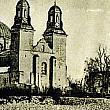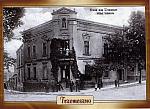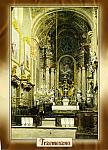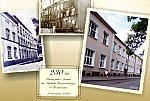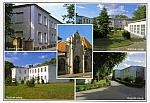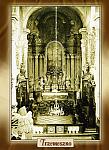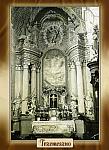
A Tale of Two Cities: Trzemeszno & Grand Rapids
by Maciej Adamski and Diana Barrett
published: November 23rd, 2010
Maciej Adamski contacted the Grand Rapids Historical Commission website because of his research about the former residents of his town, Trzemeszno, Poland, who had emigrated to Grand Rapids in the second half of the 1800s. Thus began a year long conversation by email and an exchange of materials by email and post. The result—the current photo essay. (Find more information to your right in Related Items)
Anton Stiller, a tailor, and Victoria, his wife, are recognized as the first from Trzemeszno to settle in Grand Rapids in 1867. Brothers Jacob and Valentine Pogodzinski, both cabinet makers, followed, with their wives, also in 1867. Trzemeszno was a small town so possibly Stiller influenced the immigration of the Pogodzinski families. Immigration dates vary depending on sources, but Stiller and both Pogodzinskis are first listed in the 1868-69 city directory.
John Lipczynski, a potter, and brother of Louisa Pogodzinski left Poland in March of 1869, no doubt to find work and accommodations for Valeria and Stanley, John's son from prior marriage, who arrived in November of that year. John's brother, Anton, also a master potter, arrived a year later. It is claimed that John and Valeria sponsored at least forty families from Trzemeszno, many of whom settled on the West Side.
One attraction of the West Side for the new immigrants was St. Mary's Catholic Church, which was home to the German Catholics of the city. The occupation of Trezmeszno, located directly east of Berlin, by Prussia meant the Poles spoke both languages. In 1880 Anton Stiller was a member of the committee that asked Bishop Borgess of Detroit for permission to organize a Polish Church to be named for St. Adalbert, a saint who had a close connection to Trezmeszno.
The beginning of the church in Trzemeszno is somewhat of a mystery. Some medieval legends relate that St. Adalbert built the first monastery of Benedictine monks in Trzemeszno. Today, most historians believe the church was built in the first half of the 12th century. There was a symbolic grave or crypt of the saint in the central place in the church for centuries, and for almost 800 years it has been thought to be the first grave of the saint. It was also a center of the pilgrimage movement, and some Polish kings prayed there to ask for help or to thank the martyr. Consequently, St. Adalbert has always been important to the history of the church as well as Trzemeszno.
For centuries Poland was constantly invaded: by Germany on the west, Russia to the east, and Austria in the south. After the Rebellion of 1863 against Russia many Poles emigrated to the United States. Lipczynski was one of those who fought in the Rebellion. Soon after arriving in Grand Rapids he found work in the shop of Samuel Davis, a potter from England, located at E. Bridge (Michigan St.) and East Rd. (Eastern Ave.). By 1872 the family became the first Poles to settle on the east side of the Grand River. Soon John became a partner with Davis, and in 1876 he became the sole owner of "Lipginski’s Pottery."
The name Valeria Lipczynski is revered in the Polish community where she is known as "Queen of the Poles." She quickly became a recognized community leader. By the 1870s she was the Grand Rapids correspondent for several national Polish newspapers. For 60 years she was a tireless advocate for Polish-Americans in Grand Rapids. During her lifetime, Lipczynski helped create many local and national Polish organizations, and she participated in the organization of two churches, St. Adalbert's, and St. Isidore's. She was a founder of the Society of Polish Ladies, which in 1899 became the first women's organization admitted to the Polish National Alliance.
Another son of Trzemeszno, Fr. Casimir Skory, arrived in Grand Rapids in August of 1894 to become pastor of St. Adalbert's. He, with his mother and step-father, Michael Kowalski, had immigrated to Bay City in 1875. While Skory was studying for the priesthood in Rome, the Kowalskis moved to Grand Rapids, in the early 1880s, where Michael found work at the Widdicomb Furniture Co.
Fr. Skory was instrumental in the building of the new stone church of St. Adalbert's, which was modeled on the church he knew as a boy in Trzemeszno. Architecturally the church is Romanesque with a large Byzantine dome. Under Skory's pastorate a school, a sisters' convent, and a parish house were built. Recognition for his many civic and religious labors came in 1925 when the order of monsignor was conferred on him by Pope Pius XI. Msgr. Casimir Skory died in March of 1935.
The unique architecture and large dome of the Basilica of St. Adalbert, one of the first Polish parishes in Michigan, make it an architectural landmark in this city. The church was elevated to the rank of Minor Basilica in February of 1980. It is the Mother-Church of St. Isidore's (1897), Sacred Heart (1904), SS. Peter and Paul (1904), St. Michael of Muskegon (1909), and Assumption of Belmont (1904), which became the home of St. Adalbert's original wooden church, moved there by wagons in 1914 and served that parish until the 1980s.
The church in Trzemeszno, the model for St. Adalbert's, has been rebuilt several times since its original construction in the 12th century. The last big change took place in the 18th century. Unfortunately, during World War II it was burned and the western towers have been replaced. A fire in 1945 didn't destroy the entire structure of the church, which is a massive building; however, the interior decor was almost completely destroyed.
After the war the inside was reconstructed, but it is not nearly as rich as the original version. The church became a Basilica Minoris in 1969, and has the name of the Assumption of the Blessed Mary or the Assumption of Our Lady, depending on translation; for a long time St. Adalbert was included. Some 19th century stamps depicting the church used the name "Assumption of St. Mary and St. Adalbert." Gradually his name disappeared following World War II.
Polish Letters from Grand Rapids to Trzemeszno, 1936-1947
Bibliography
Items available at the History & Special Collections Dept., Grand Rapids Public Library
- Baxter, Albert. History of the City of Grand Rapids, Michigan. New York, Grand Rapids: Munsell & company, 1891.
- Bratt, James D. Gathered at the River. Grand Rapids Area Council for the Humanities: Erdmans, 1993.
- Erdmans, Mary Patrice. The Grasinki Girls: The Choices They had and the Choices They Made. Ohio Univ. Press, 2004
- Skendzel, Eduard Adam. The Basilica of St. Adalbert. Greenville Print. Co., 1980
- Skendzel, Eduard Adam. The Rise and Fall of Grand Rapids Polonia, 1993
- Skendzel, Eduard Adam. Polonia Musings: A Series of Articles from Vaious Publications, 1983
- Coll. #179, Lipczynski Family Papers
- Coll. #299, Eduard Adam Skendzel Polonian Historical Collection
- Biography and Portrait files: Lipczynski, Skory
- Ethnic/Polish Newspaper Clippings

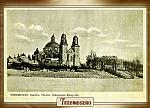
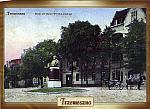

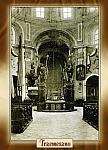

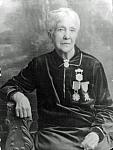
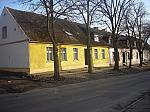
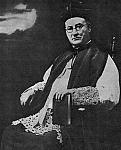

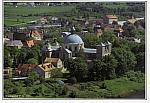
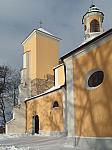

 facebook
facebook